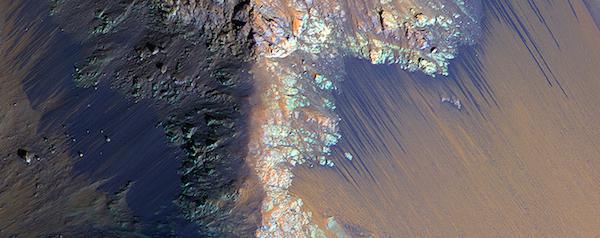Update (June 8, 2018): Organic molecules have been discovered in an ancient lakebed.
Update (July 25, 2018): An underground lake has been discovered.
Update (March 31, 2019): A paper published in Science Advances shows that Mars had running rivers for billions of years.
Update (May 20, 2019): Pluto might have a liquid ocean under its surface.
Update (September 14, 2020): Mars always seemed the most likely place to have life or had life besides Earth. But now the detection of phosphine in the upper atmosphere of Venus suggests life may have adapted to harsh conditions there. So far, a nonbiological explanation hasn't been found. Seth Shostak:
If you find life on the next planet over, you might say, "well, maybe we're not all that special".
Update (September 28, 2020): A study published in Nature Astronomy presents evidence of additional underground lakes at the Martian south pole.
Update (November 29, 2020): A review of data finds only about one-fourth as much phosphine as previously estimated for Venus.
Update (February 3, 2021): A new study suggests that an unexpected amount of sulfur dioxide in the atmosphere of Venus was misinterpreted as phosphine.
Update (July 13, 2023): Phosphine has been detected again at Venus, but apparently in a lower part of the atmosphere.
Also, a paper published in Nature describes organic compounds on Mars, but doesn't conclude that the compounds are evidence for past life.


